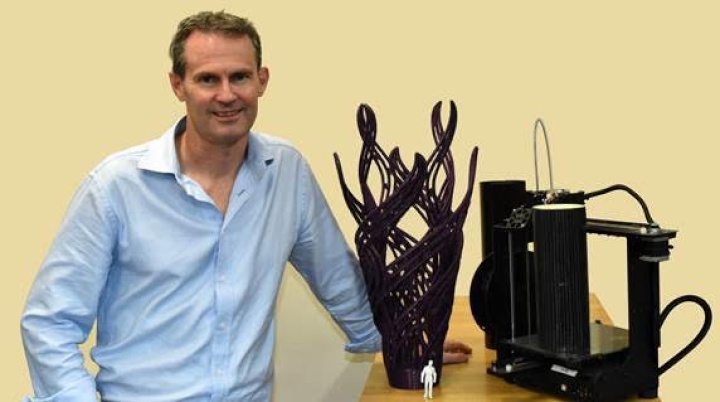Rotorua innovators to manufacture Hemo roundabout sculpture
News Release
1 December 2017
Rotorua innovators to manufacture Hemo roundabout sculpture

Rotorua’s 12m southern entranceway sculpture will be manufactured by local firm Kilwell Fibretube using world-leading 3D printing technology.
It will take almost 16,500 hours to print on-site at Kilwell’s Rotorua factory.
The local innovators approached Rotorua Lakes Council after becoming aware of issues regarding the manufacture of the New Zealand Maori Arts and Crafts Institute-designed sculpture, which is to grace the centre of the new roundabout at Hemo. It was originally intended to be made of stainless steel but this was found to be problematic and alternatives were being investigated.
“Kilwell approached us so we’ve been working with them, alongside Te Puia/New Zealand Arts and Crafts Institute and Victoria University’s digital design lecturer Derek Kawiti,” Rotorua Lakes Council Art and Culture Director Stewart Brown says.
“It’s a fantastic result – this is going to be very innovative and the fact it will be done locally is really great. The work will also create a few new jobs so that’s an added bonus.”
Kilwell will have 3D printers running 21 hours per day, seven days a week for 79 days, with carbon fibre then layered over the top. If there are no unexpected delays, the sculpture should be ready for instalment by about late August 2018.
Kilwell Fibretube chief executive officer, Craig Wilson (pictured above with a model of the sculpture) says Kilwell prides itself in being a world leader in innovative design and manufactures a diverse range of complex products.
“It’s fantastic to be able to showcase the work we do to our local community and be part of the sculpture that will welcome visitors to our city from the south.”
The 3D printers will use over 63km of PLA filament in the sculpture’s construction, Mr Wilson says.
Weighing just 800kgs, compared to the original 12 tonne estimate, the sculpture can be easily lifted into place once completed.
New Zealand Māori Arts and Crafts Institute tumu (head) of Te Takapu o Rotowhio (National Stone and Bone Carving School) Stacy Gordine, says the design hasn’t been compromised as a result.
“The finished product will look exactly like the model thanks to the precision of 3D technology.”
Inspired by the Te Arawa history of tohunga (high priest) Ngatoro-i-rangi, who was responsible for the safe passage of his people to Aotearoa, the sculpture will form part of the southern gateway into Rotorua.
"The design is derived from customary whakairo rākau (wood carving) elements, yet is interpreted in a contemporary way,” says Mr Gordine.
Te Puia chief executive, Tim Cossar says it
is great to be able to fabricate the sculpture
locally.
“We always wanted to involve local business and to be able to do this is a fantastic result. It is set to be a stunning piece of art for Rotorua.”
Fact box:
• The 3D printers will run on average for 21 hours per day, seven days a week for 79 days
• Almost 16,500 hours of 3D printing time in total
• The 3D printers will use more than 63km of PLA filament
• The sculpture will weigh 800kg and stand 12m high
• Four new jobs created during the six-month construction period.
ends


 Gordon Campbell: On Why We Can’t Survive Two More Years Of This
Gordon Campbell: On Why We Can’t Survive Two More Years Of This SPCA: Survey Shows Government Lacks Mandate To Repeal Live Export Ban
SPCA: Survey Shows Government Lacks Mandate To Repeal Live Export Ban Peace Action Ōtautahi: Bridge Of Remembrance Peace Protest
Peace Action Ōtautahi: Bridge Of Remembrance Peace Protest National Wetland Trust: Public Asked To Help Prevent Fires In Wetlands This Summer
National Wetland Trust: Public Asked To Help Prevent Fires In Wetlands This Summer Lillian Hanly, RNZ: The Year In Politics - Stories That Dominated The Headlines In 2024
Lillian Hanly, RNZ: The Year In Politics - Stories That Dominated The Headlines In 2024 Waikato Regional Council: Studies Open Door To Mercury Islands Underwater World
Waikato Regional Council: Studies Open Door To Mercury Islands Underwater World Office of the Privacy Commissioner: Christmas Is About Giving, But Don’t Give Up Your Privacy
Office of the Privacy Commissioner: Christmas Is About Giving, But Don’t Give Up Your Privacy


